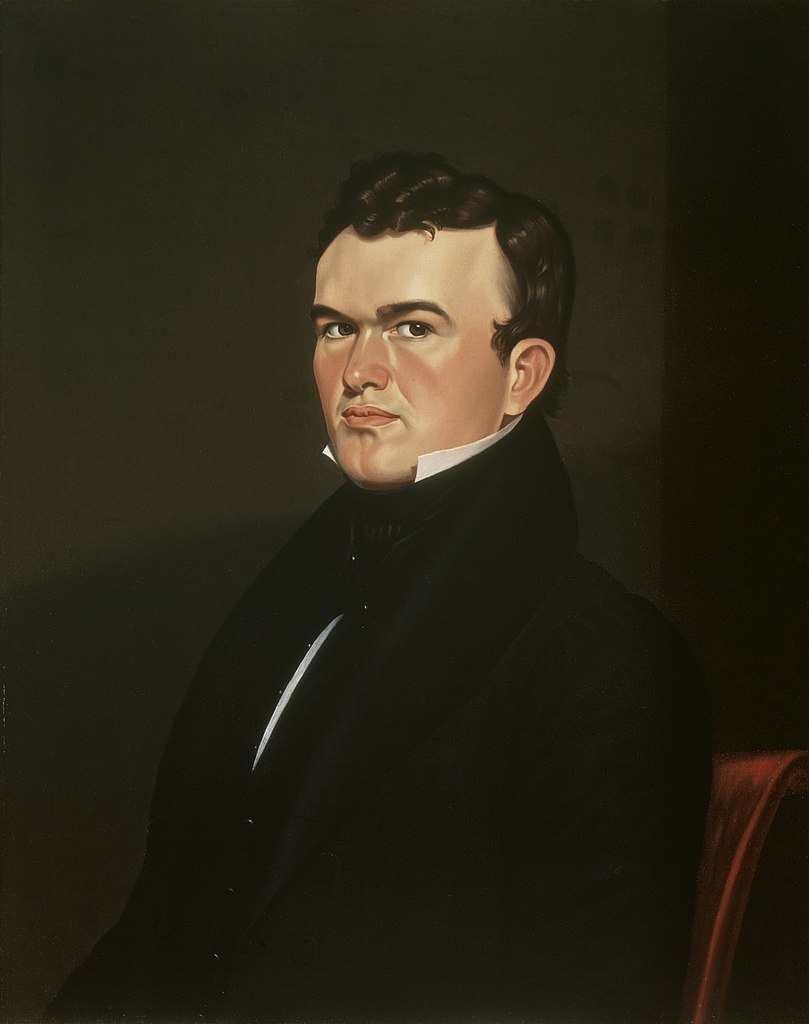More about George Caleb Bingham
- All
- Info
- Shop
Works by George Caleb Bingham

Sr. Contributor
Defying all stereotypes, George Caleb Bingham traveled to the frontier and became an artist.
Someone had to document what life was like out there, and Bingham willingly took up the task. A brush with luck and fame may have inspired this ultimate career choice. When Bingham was just nine years old, he saw Chester Harding’s portrait of the infamous pioneer Daniel Boone in the temporary studio that the artist set up upon his arrival in Missouri. This early encounter likely inspired Bingham’s later foray into art and especially his interest in portraiture and scenes of people.
After working as a janitor at the girls’ school that his mother founded, Bingham left home to become a cabinet maker and delved into the arts. Not long after that, he started to paint family portraits, using drawing manuals and studying engravings of paintings to teach himself. Bingham was entirely self-taught, except for a three-month stint at the Pennsylvania Academy of the Fine Arts during a longer trip to see the art that was housed on the East coast. He studied the work of Benjamin West and Thomas Sully, which informed his paintings of frontier life and politics upon his return to Missouri. His hard work ultimately paid off. Just six years after starting to explore painting, Bingham was supporting himself through his artmaking. He then moved to St. Louis, where his career really took off.
Bingham is best known for his artworks that center on the peoples whose lives depended on the Missouri and Mississippi Rivers. These calm and idyllic scenes have since been recognized as constructed versions of the reality the images were based on. Bingham’s love for his native Missouri eventually morphed into a political career, driven by his belief that slavery was immoral. He wrote scathing letters to a Missouri newspaper radically opposing the expansion of slavery beyond its original borders and into the territories.
Bingham’s artistic and political legacy won him a place in the hearts of Missourians. In 1974, the St. Louis Mercantile Library tried to sell their treasure trove of drawings by George Caleb Bingham to pay for a new air conditioning system. Before they could put the collection up for sale, the current governor called upon the people of Missouri to help raise funds to keep the collection. Even though the local government probably could’ve found the money to maintain a municipal building and preserve aspects of their cultural heritage, students from all across the state started raising funds and eventually raised upwards of $25,000 for the cause. Under new legal restrictions that resulted from this extraordinary effort, the collection of drawings can now never be sold or separated. When the drawings appeared in a landmark exhibition at The Metropolitan Museum of Art in 2015, they bore a heartwarming credit line that read, “Lent by the People of Missouri.” I have a feeling that this is exactly what Bingham would’ve wanted.
Sources
- Encyclopedia Britannica. “George Caleb Bingham.” Visual Arts. https://www.britannica.com/biography/George-Caleb-Bingham. Accessed 30 June 2020.
- Keating, Deborah. “Bingham, George Caleb.” Civil War on the Western Border: The Missouri-Kansas Conflict, 1854–1865. The Kansas City Public Library. https://civilwaronthewesternborder.org/encyclopedia/bingham-george-caleb. Accessed 30 June 2020.
- Smith, Roberta. “Review: George Caleb Bingham’s Serene Images of Rivers and Frontier Life, at the Met.” Art & Design. The New York Times. https://www.nytimes.com/2015/06/19/arts/design/review-george-caleb-bing…
- St. Louis Art Museum. “Missouri children spearheaded 1970s campaign to save George Caleb Bingham drawings.” Blog, Exhibitions. 18 March 2015. https://www.slam.org/blog/missouri-children-spearheaded-1970s-campaign-…. Ac
- The State Historical Society of Missouri. “George Caleb Bingham.” Historic Missourians. https://historicmissourians.shsmo.org/historicmissourians/name/b/bingha…. Accessed 30 June 2020.
Featured Content
Here is what Wikipedia says about George Caleb Bingham
George Caleb Bingham (March 20, 1811 – July 7, 1879) was an American artist, soldier and politician known in his lifetime as "the Missouri Artist". Initially a Whig, he was elected as a delegate to the Missouri legislature before the American Civil War where he fought against the extension of slavery westward. During that war, although born in Virginia, Bingham was dedicated to the Union cause and became captain of a volunteer company which helped keep the state from joining the Confederacy, and then served four years as Missouri's Treasurer. During his final years, Bingham held several offices in Kansas City, while also serving as Missouri's Adjutant General. His paintings of American frontier life along the Missouri River exemplify the Luminist style.
Check out the full Wikipedia article about George Caleb Bingham












